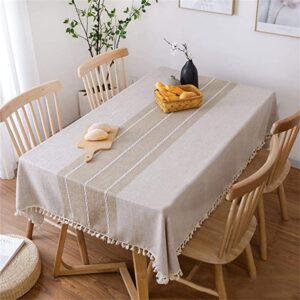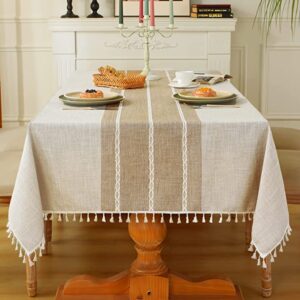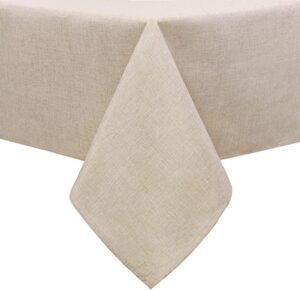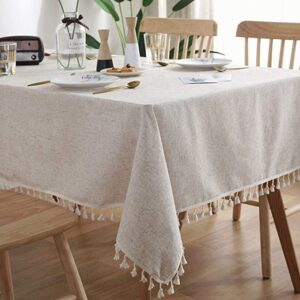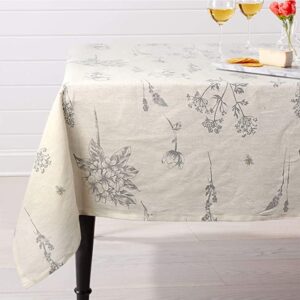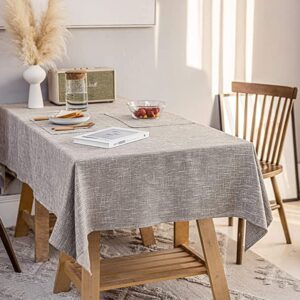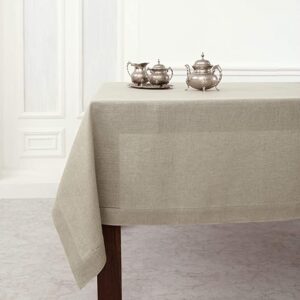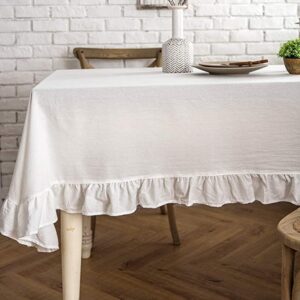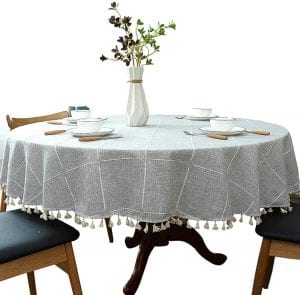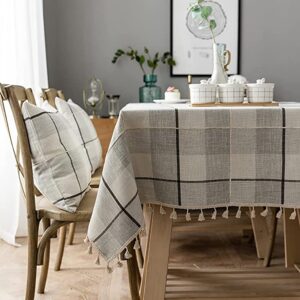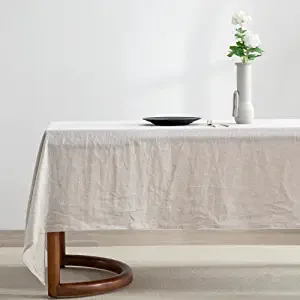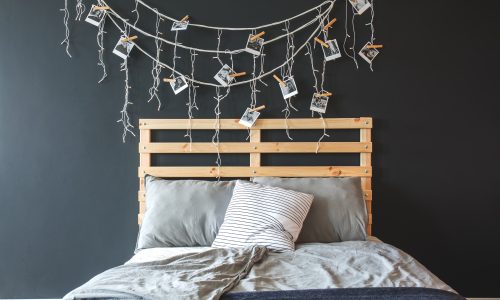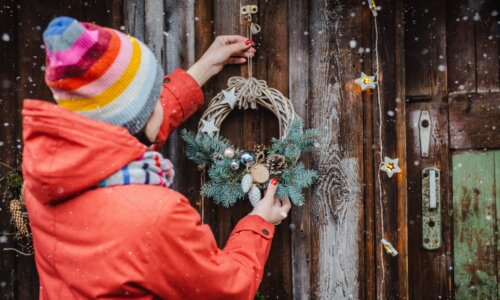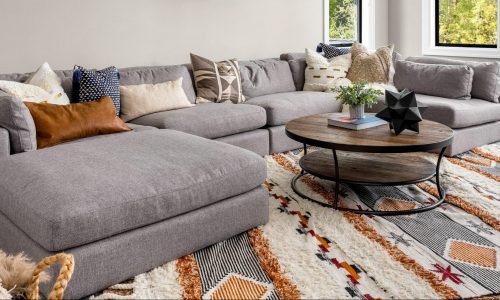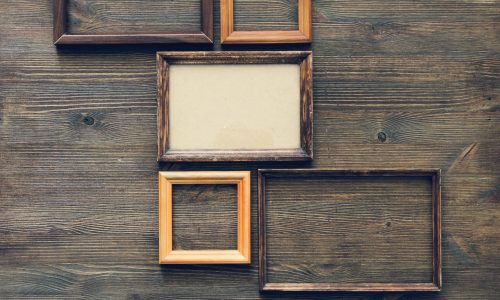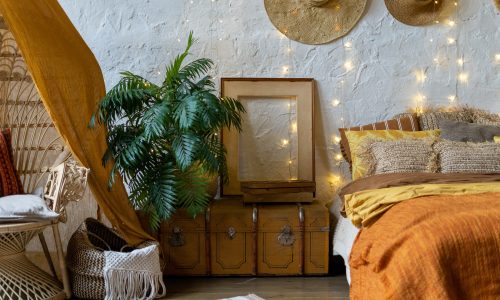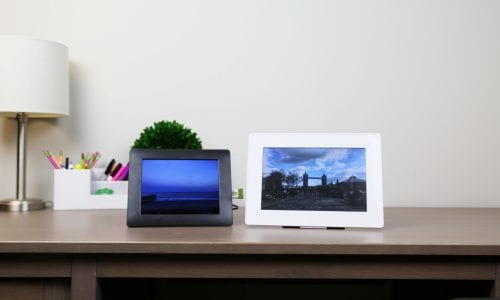Best Linen Tablecloths
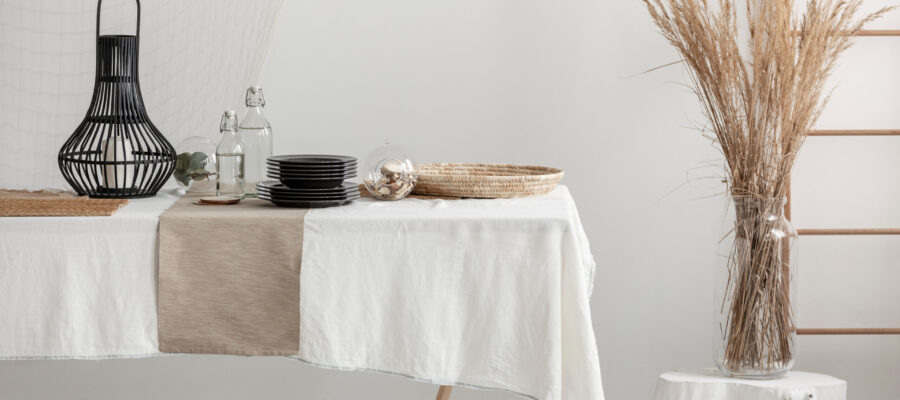
Our Review Process
Don't Waste Your Money is focused on helping you make the best purchasing decision. Our team of experts spends hundreds of hours analyzing, testing, and researching products so you don't have to. Learn more.
Our Picks For The Top Linen Tablecloths
- 1. Vonabem Wrinkle Free Tassel Dyed Cotton Linen Tablecloth
- 2. Laolitou Waterproof Washable Rustic Cotton Linen Tablecloth
- 3. Hiasan Wrinkle & Stain Resistant Washable Faux Linen Tablecloth
- 4. AMZALI Everyday Washable Tassel Cotton Linen Tablecloth
- 5. ColorBird Indoor Outdoor Botanical Print Cotton Linen Tablecloth
- 6. JSFLY Waterproof Indoor Outdoor Wipe Clean Cotton Linen Tablecloth
- 7. Solino Home Classic Hemstitch European Flax Linen Tablecloth
- 8. Lahome Washable Rustic Flounces Cotton Linen Tablecloth
- 9. Dimatic Vintage Tablecloth
- 10. Neelvin Waterproof Rustic Tassel Thick Cotton Linen Tablecloth
- 11. EVERLY Machine Washable 100% Pure Natural Linen Tablecloth
The tan color of this table cover is well suited to wooden furniture, and it hides stains well. Not that you have to worry much about those, since the waterproof fabric wipes clean easily. It can even go through the wash and come out wrinkle free.
Durable Farmhouse CharmStains wipe off with little effort.
You can count on this thick tablecloth for everyday use. Its thick cotton blend can take whatever the biggest family dinners can dish out and still come out looking presentable. The design is rustic but the tassels add a touch of class.
Strong Cotton FabricPile the servings onto this sturdy cloth.
If you want the elegance of linen without the upkeep, look no further. This polyester blend tablecloth is built for heavy use and can weather stains well. Clean as directed in a standard washing machine and a swift ironing should do wonders.
Softer Than LinenEnjoy many family dinners on this workhorse tablecloth.
The minimal look of this cloth can suit a wide range of kitchen decor. Tassels on the fringe help weigh it down and add a little elegance. The cotton linen fabric is suitable for the washing machine but most stains will scrub off without much work.
Stains Wipe OffThe water-resistant fabric saves time and headaches.
Buying Guide
When you’re planning a big family meal, presentation goes a long way. And while fine china and fancy glassware can all help, nothing sets the tone without showing off like a proper linen tablecloth.
Of course, tablecloths aren’t just for big formal dinners. First and foremost, they’re there to protect the table underneath. But the table is the centerpiece of any kitchen, so whatever you’re using to cover it will say a lot about you to your guests.
The first thing to know about a linen tablecloth is that it might not necessarily be made of linen fabric. The term “linen” has become so synonymous with tableware that you might find tablecloths advertised as linens that are actually made of cotton, polyester or some form of blend. First and foremost, check the materials.
That’s not to say that you absolutely need linen unless that’s what the occasion calls for. True linen is made from flax, and when it’s woven into sheets or cloths they tend to be light but strong, and somewhat coarse. That texture makes them ideal for tabletops where you don’t want things sliding around. If there are spills, linen can absorb plenty of moisture. There’s also nothing like the look of quality linen, which is why it’s a great choice for weddings or special occasions.
It does require some upkeep though, which is why cotton is a solid choice for tablecloths that see daily use. Cotton usually does better in standard washing machines, and comes out with fewer wrinkles than linen. And while it’s generally not as durable as linen, cotton cloths can be a little more absorbent.
At the more affordable end, we find polyester and polyester blends. These kind of tablecloths can vary widely in quality and a lot depends on the weave. While most polyester cloths aren’t as absorbent as cotton, they’re almost always more durable. If you’re looking for something elegant but still affordable, you can make an impression with vinyl or damask tablecloths, which are very smooth.
If you want a little flair, you might go for tassles or other fringe decorations on your tablecloth, which can work with the right decor. These accents usually work best on cloths with a shorter drop, which means they don’t hang as low. (This is especially true if you have pets who like to use the tassels for playtime.)
What to Look For
For the most part, choosing the shape of your tablecloth is a no-brainer. You can’t really go wrong by matching square tablecloths to a square table, for example, or circular ones to a circular ones to a circular table. There are no hard and fast rules, though. It’s perfectly acceptable to drape a square tablecloth over an oval or circular surface and letting the corners hang down, as long as the entire table is covered and the corners are even. It’s less common to see an oval tablecloth covering a rectangular table, but it can be done if you’re looking to add a little modern flair.
As for the size of the tablecloth, all it takes is a little math. Just measure the length and width of the tabletop, then add twice the desired drop amount to each of those numbers. (The drop refers to the amount of tablecloth that hangs over the edge.) For example, let’s say you have a 4 x 6 foot table, and you want a tablecloth with a one foot drop. Your tablecloth size should be 6 x 8 feet, or 4 + (1 X 2) by 6 + (1 x 2).
More to Explore
One of the most famous tablecloths in the history of art is undoubtedly the long, white linen in Leonardo da Vinci’s mural “The Last Supper.” As befits the depiction of Jesus Christ and his apostles sharing a final meal, it’s a plain white cloth with knots on the corners. Somber yet striking? Yes. Accurate? Probably not. Most historians agree that tablecloths weren’t in use even by the very rich until sometime in the first century A.D.

